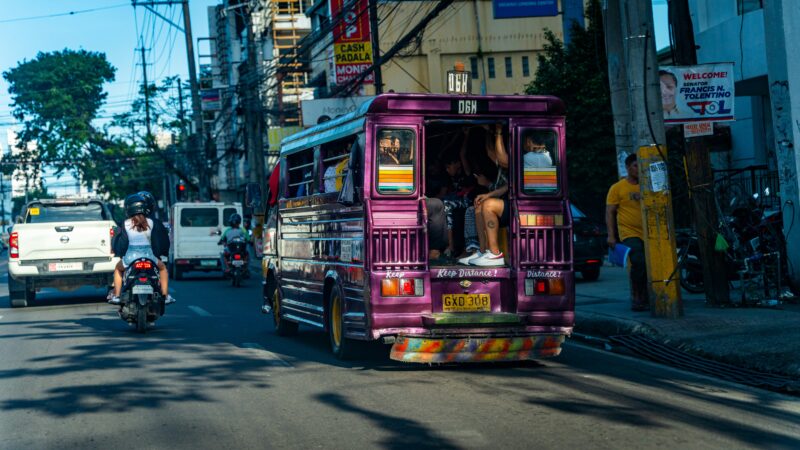Embark on a journey through time as you uncover the rich history of the Philippines through its historical highways. Once traversed by Spanish conquistadors, Filipino revolutionaries, and American troops, these roads now lead modern-day adventurers to iconic landmarks and monuments scattered across the archipelago. From the ancient rice terraces of Banaue to the colonial streets of Vigan, these historical highways offer a window into the country’s vibrant past.
Importance of road trips for exploring landmarks and monuments
Road trips have always been a popular way to explore and experience the beauty of a country. They offer the freedom to go wherever you want, whenever you want, and allow you to immerse yourself in the local culture and history. When it comes to the Philippines, road trips have an added advantage – they take you on a journey through the country’s historical highways, where you can visit iconic landmarks and monuments that have played significant roles in shaping the nation.
Before setting off on your historical road trip adventure through the Philippines, it’s essential to prioritize road safety. Familiarize yourself with local traffic laws and regulations, ensure your vehicle is in good condition, and always wear your seatbelt. Remember, road safety is paramount to enjoying a smooth and memorable journey through time along the Philippines’ historical highways.
Historical highways in Luzon
Luzon, the largest island in the Philippines, is home to several historical highways worth exploring. One such highway is the North Luzon Expressway (NLEX), which stretches from Metro Manila to the provinces of Central Luzon, making it an ideal route for a Manila road trip. Along this route, you’ll discover many significant landmarks and monuments showcasing the country’s history.
One of the must-visit destinations along the NLEX is Malolos, the capital of Bulacan province. Here, you can explore the Barasoain Church, a significant historical site where the Malolos Constitution was drafted in 1898. This document paved the way for establishing the First Philippine Republic, making it an important landmark in the country’s struggle for independence.
Another notable stop along the NLEX is the city of Angeles in Pampanga province. Here, you can visit the Museo ning Angeles, a museum showcasing the city’s rich heritage and history. The museum offers a comprehensive look at the region’s past, from ancient artifacts to displays on the Mount Pinatubo eruption.
Moving on to the South Luzon Expressway (SLEX), you’ll find even more historical sites waiting to be explored. One such destination is the city of Calamba in Laguna province, the birthplace of the national hero Jose Rizal. Pay a visit to the Rizal Shrine, a museum dedicated to Rizal’s life and works, and gain a deeper understanding of the Philippines’ fight for freedom.
Road trip destinations in Visayas
The Visayas region is known for its stunning landscapes and vibrant culture. It is also home to several historical highways perfect for road trips. One such highway is the Pan-Philippine Highway, also known as the Maharlika Highway, which connects Luzon to Mindanao. Along this route, you’ll encounter numerous landmarks and monuments that reflect the region’s rich history.
One of the must-visit destinations along the Pan-Philippine Highway is the Queen City of the South, perfect for a road trip in Cebu adventure. Here, you can explore the historic district of Colon Street, considered the oldest street in the Philippines. Take a stroll along its cobblestone streets and admire the well-preserved colonial architecture that harks back to the Spanish era.
Continuing your road trip, head to Iloilo City and visit the Jaro Cathedral, a significant religious landmark in the region. Built during the Spanish colonial period, this church is known for its beautiful facade and intricate details. Inside, you’ll find relics and artifacts telling the city’s religious heritage story.
Historical highways in Mindanao
Mindanao, the southernmost island in the Philippines, is a treasure trove of cultural and historical landmarks. One of the historical highways worth exploring in this region is the Davao-Cotabato Highway. As you drive along this route, you’ll have the opportunity to discover unique cultural treasures and historical sites.
One of the highlights of this road trip is a visit to the city of Davao, known as the “Durian Capital of the Philippines.” Here, you can explore the Davao Museum, which houses many artifacts and exhibits that showcase the region’s cultural heritage. From ancient pottery to tribal artifacts, the museum offers a glimpse into the diverse cultures that call Mindanao home.
Another must-visit destination along the Davao-Cotabato Highway is the city of Cotabato. Here, you can explore the Sultan Haji Hassanal Bolkiah Masjid, also known as the Grand Mosque. This architectural masterpiece is one of the largest mosques in the Philippines. It serves as a symbol of the region’s rich Islamic heritage.
Conclusion: Embarking on a Historical road trip in the Philippines
A road trip along the historical highways of the Philippines is more than just a journey. It’s an opportunity to step back in time and immerse yourself in the country’s captivating history. From the ancient ruins of Banaue to the colonial streets of Vigan, these roads will transport you to a bygone era, allowing you to witness firsthand the stories behind each destination.
So, pack your bags, hit the road, and get ready to embark on a historical adventure like no other. The Philippines is waiting to be explored, and its historical highways are the perfect routes to take you on a journey through time. From iconic landmarks to hidden gems, these roads will leave you with memories that will last a lifetime. So buckle up and get ready to discover the Philippines like never before!



